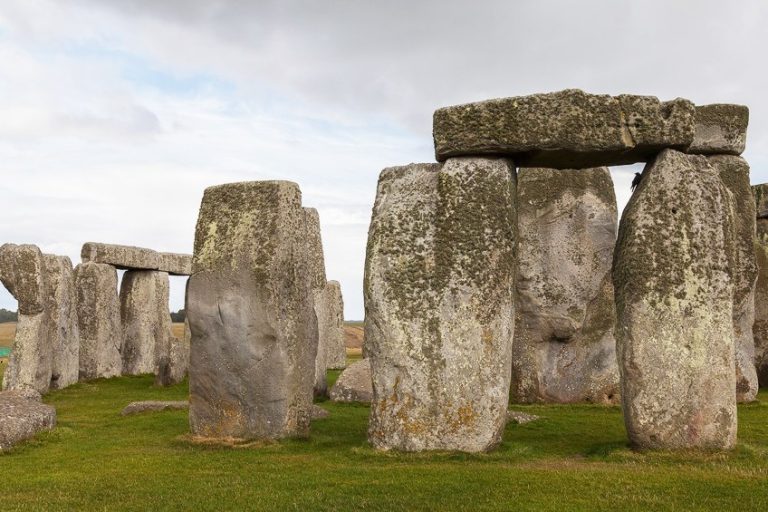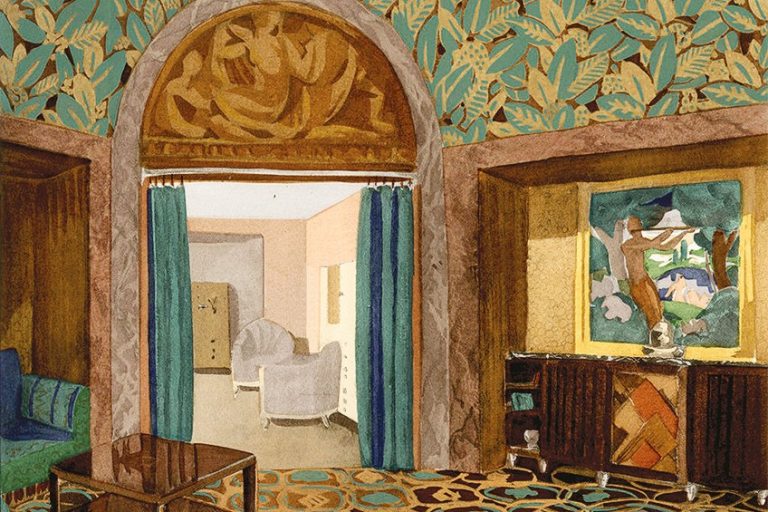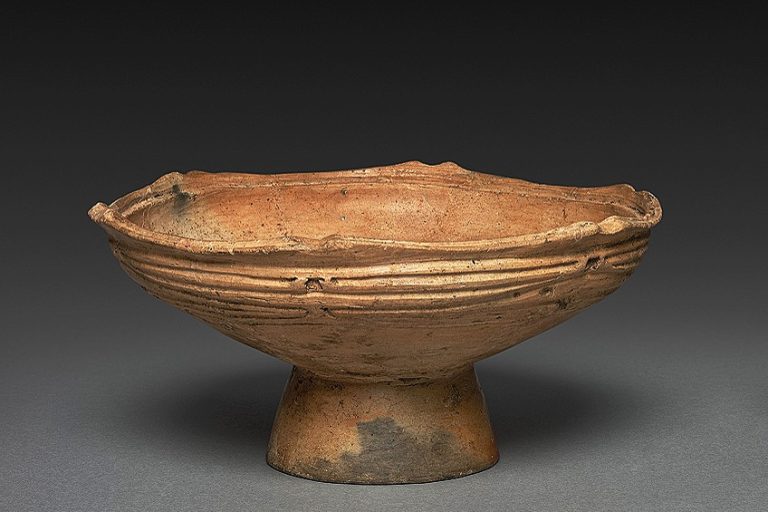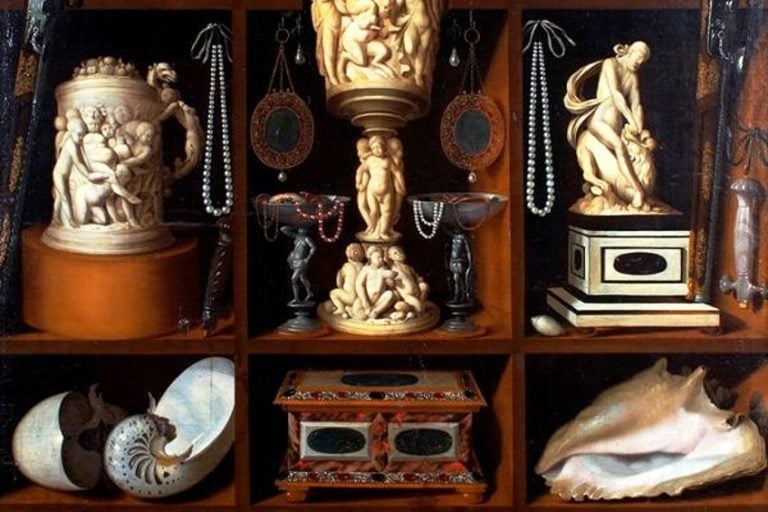Realism Art – A History of Realism and the Realism Art Movement
Realism art is an artistic movement that began in the 19th century in France, as a result of the great social changes sparked by the Industrial Revolution. This movement placed greater focus on the realism present within the subject matter, as artworks began to depict ordinary and everyday scenes in a very realistic manner. Elements associated with traditional high art were discarded in favor of portraying subjects and works in a naturalistic style. Today, Realism describes works that are painted so realistically that they mimic a photograph.
Table of Contents
Realism Art: An Introduction
Widely thought to signify the beginning of modern art, Realism was an art movement that discarded the traditional elements that had previously governed artworks. This shift allowed subject matter and scenes to be depicted as they were truly viewed. The Realism Art movement created artworks that were as realistic as possible, as artists attempted to portray their subject matter in an honest and accurate light without disguising the more unpleasant elements of life.
Realism, sometimes referred to as Naturalism, appeared within France during the 1850s, after the 1848 Revolution. Following this upheaval, the right to work had firmly been established in France, with this movement depicting the average, working-class population, as well as their current settings and everyday scenes, in a new light. Thus, common individuals were suddenly seen as interesting and respectable subjects, with artists beginning to represent the broader society within their works.

Prior to the Realism movement, Romanticism was the reigning style that was used within the creation of art. This artistic movement, which was defined by an elevated sense of emotion and intensified drama, typically displayed exotic and mythological figures and grand scenes of nature in a glorified light. Realist artists dismissed this within their artwork, as they believed that everyday life and the modern world existed as appropriate subjects for art.
This anti-Romantic development paved the way for Realism in art, which sought to embrace the aims of modernism through reexamining and overthrowing traditional values and beliefs within society. Within the mid-19th century, Realism focused on how life was socially, economically, politically, and culturally arranged. This led to unwavering and often horrible portrayals of life and its unpleasant but raw moments.
In the aftermath of the Industrial Revolution, traditional forms of art, literature, and social organization were dismissed on the basis that they had become outdated. The Realism Art movement reformed painting and what was thought to constitute art as it replaced idealistic images with real-life scenes, which brought ordinary society closer to the grand subjects which were typically represented in paintings.
Realism was the first clearly anti-institutional and non-conformist art movement.
Working in a time marked by revolution and vast social change, Realism attacked the values of the bourgeois society by portraying regular individuals from all social classes within their artworks. Ordinary yet contemporary situations were shown in a truthful and accurate light, with artists including the unpleasant aspects of life to display an honest depiction of what they saw.
Realism artists began to use common laborers as their prime subjects, as well as ordinary individuals that were engaged in real activities in normal surroundings. Prior to this movement, the poverty of subjects was rarely included in the moral message surrounding art, with Realism openly emphasizing the challenges of life for the poor within the artworks created.
Whilst Realism was said to directly stem from artists’ desire to present more honest and unidealized views of everyday society, a number of other intellectual developments stimulated its growth. Among these were the Positivist philosophy developed by Auguste Comte, in which the study of society was emphasized, the increase in professional journalism that was able to accurately record current events, and the development of photography which was able to exactly reproduce visual images.
The combination of these developments added to the rising interest in documenting the current life and society of the 19thcentury. Thus, Realism was used as a vehicle to critique the social and political aspects of society, with artists making use of newspaper printing and mass media to broadcast their work.
The depiction of ordinary and common subjects has long appeared within art, with the Realism movement bringing this style to the forefront. Through its development, other forms of Realism have developed throughout the history of art. The most notable progressions of Realism were Pictorial Realism, which begun in the United States as a way to create unsentimental records of contemporary life, and Social Realism, which was the Marxist aesthetic of Realism within the Soviet Union from the early 1930s to 1991.
The most notable innovators of Realism Art were artists Gustave Courbet, Jean-François Millet, Honoré Daumier, and Jean-Baptiste-Camille Corot, who created art that coincided with the naturalist literature of Émile Zola, Honoré de Balzac, and Gustave Flaubert. In addition to art, Realism has influenced other forms of creation, such as literature, theater, cinema, and opera.
The choice to bring everyday life into artworks was seen as both an appropriate Realism art definition and an early demonstration of the avant-garde urge to combine art and life, which was spurred on by a complete rejection of traditional artistic techniques. Whilst the Realism movement may not be seen as such a significant movement today, its exceptional attention to everyday subject matter marked an important transformation in the history of art.
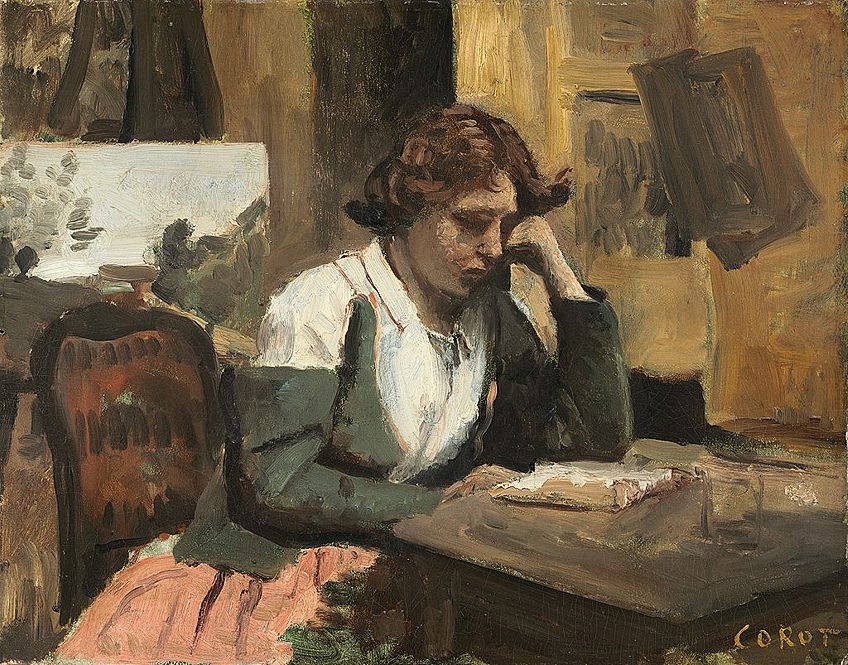
Realism Art Style and Influences
Within the Realism Art movement, artists moved away from the previously Romantic style that had dictated artistic creation in favor of capturing a truthful representation of life. This led scenes, objects, and subjects to be depicted in a meticulous, accurate, and detailed way. Realism painting and drawing represented a move away from the ideal, which was exemplified by works of Renaissance artists and sculptors, and towards an ordinary, real depiction of what was seen.
Within figure drawings and paintings, Realist art attempted to illustrate real people as opposed to a romanticized type of person. This allowed artists to feel truly free in depicting real-life instances that were stripped of aesthetic beauty. Additionally, universal truths that had previously accompanied art and illustrated peasants to look healthy and content were no longer seen as acceptable, as they did not truthfully convey what life was like.
Due to this, Realism in art demonstrated an advanced and extremely prominent shift in the significance and function of art overall, as well as influencing other genres of artistic creation such as literature and fine art. The Realism Art movement was very powerful, as it was said to influence other movements like Impressionism and Pop Art. Currently, the effect of Realism is still demonstrated in the visual art that is created today.
The style used within Realism painting spread to almost all the different types of painting, which included portraiture, history painting, genre-painting, as well as landscapes. In terms of landscape painting, artists were dissatisfied with what they saw in their immediate environment, so they left their provinces to look for more truthful landscapes to accurately depict France.
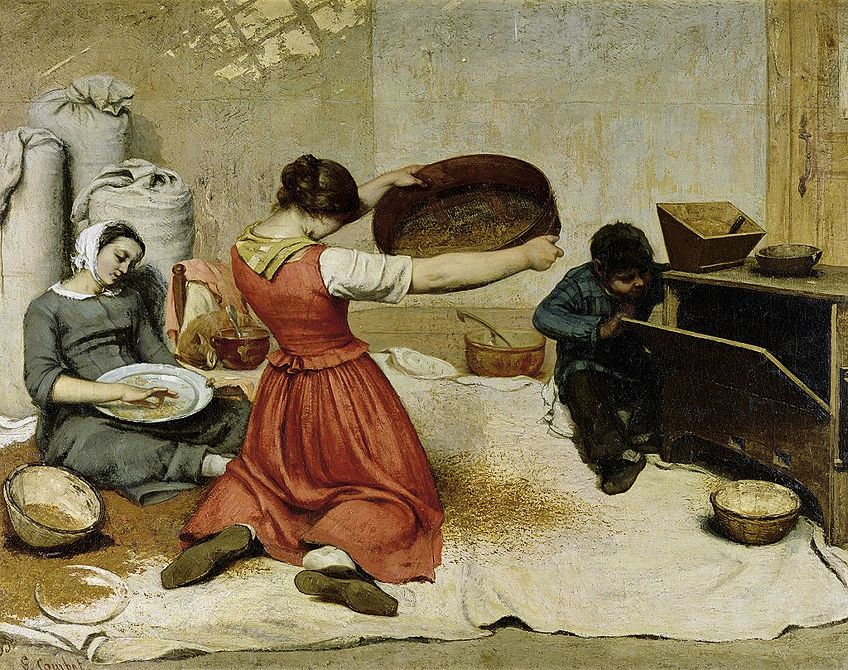
A distinct characteristic present within Realist art was the subject matter that was chosen. Favored subjects included genre scenes of rural and urban working-class lives as well as street-life, cafés and nightclubs, and some forms of nudity when working with subjects who were more sensuous. Unsurprisingly, this raw and truthful approach to subject matter shocked the bourgeois art audience at the time in France, which was predominantly made up of upper and middle-class society.
These stark depictions of life led to characteristically unflinching portrayals of subject matter, which were sometimes ugly in nature. In an attempt to embrace the unpleasant moments that accompanied life, Realism artists did not attempt to glorify these moments and instead depicted them in dark, earthy tones. This was done to confront the standard ideals of beauty that were traditionally associated with high art, which led to Realism never being fully embraced within French and Victorian English society.
Illusionistic Realism
Due to its portrayal, Realism was also referred to as mimesis or illusionism within art. Despite the movement only appearing in France after the revolution, Realist art was created in many periods, as the artworks were based on techniques, training, and the avoidance of stylization. Within visual arts, the term “Illusionistic Realism” referred to the accurate depictions of subjects, their surroundings, as well as light and color, with this progression of increasingly accurate portrayals of subjects said to have a long history within art.
At the time that Christianity began to affect the art of the upper-class society, the characteristics within Illusionism were rejected due to its expressive force. These characteristics of Realism would only reappear during the Early Renaissance, when new techniques of oil painting allowed very elusive yet precise effects of light to be painted using small brushes and a number of layers.
Before the start of the Realism Art movement, Egyptian art progressed in both the stylization and idealization of its subjects, as well as Ancient Greek art which was recognized for its great lifelike representation of anatomy. Additionally, characteristics of Realism were present in the Early Netherlandish paintings of artists, including Robert Campin and Jan van Eyck. However, the characteristics of Realism that was initially depicted typically portrayed angels with wings and other idyllic representations which had never been seen before in real life.

Pioneers of Realism
Throughout the development of Realism within art, many important figures emerged as notable artists of the movement. One of the most prominent artists involved within Realism was French painter Gustave Courbet, who is often considered to be the leading figure of the movement. Courbet constructed the basis on which the movement was built in the 1840s when he began to portray peasants and laborers on a majestic scale within his artworks that were generally reserved for religious, historical, or allegorical figures.
Courbet was the first artist who deliberately announced and practiced within the Realism movement, as he openly challenged the aesthetics of the traditional historical paintings that were established by the artistic society. He began to paint authentic working-class people from his region on great canvases which were traditionally reserved for noble individuals.
In doing so, Courbet was able to elevate ordinary individuals to the same status as the wealthy bourgeoise society.
The style and subject matter that was present in Courbet’s work was influence by the achievements made by artists Théodore Rousseau, Charles-François Daubigny, and Jean- François Millet within the Realism Art movement. These painters created paintings that faithfully depicted their ordinary subjects and landscapes, as well as emphasizing the simplicity present within their works.
Another important pioneer of the Realism Art movement was Jean-François Millet, who was one of the first artists to depict peasants and laborers in a grand and monumental light that was typically reserved for significant individuals. Millet continually returned to farmers as his subject of choice, as he believed they best suited his nature, as the human element that he was able to depict held the most meaning for him.
French artist Honoré Daumier was also seen as a pioneer of Realism, as he believed the working-class to be the true heroes and heroines within society. Thus, Daumier frequently depicted French lawyers and politicians through satirical caricatures. He achieved his caricatures by using an energetic and linear style to brazenly emphasize details in order to critique the depravity and vileness he saw to exist in French society.
Thus, the main characteristics to come from Realism art were that of using ordinary individuals as the main focus point of artworks, as well as elevating these subjects matters to the same respected level as upper-class society. In doing so, Realist artists were able to truly capture an authentic slice of life, in order to document what they saw around them after the monumental events and changes brought on by the Industrial Revolution.
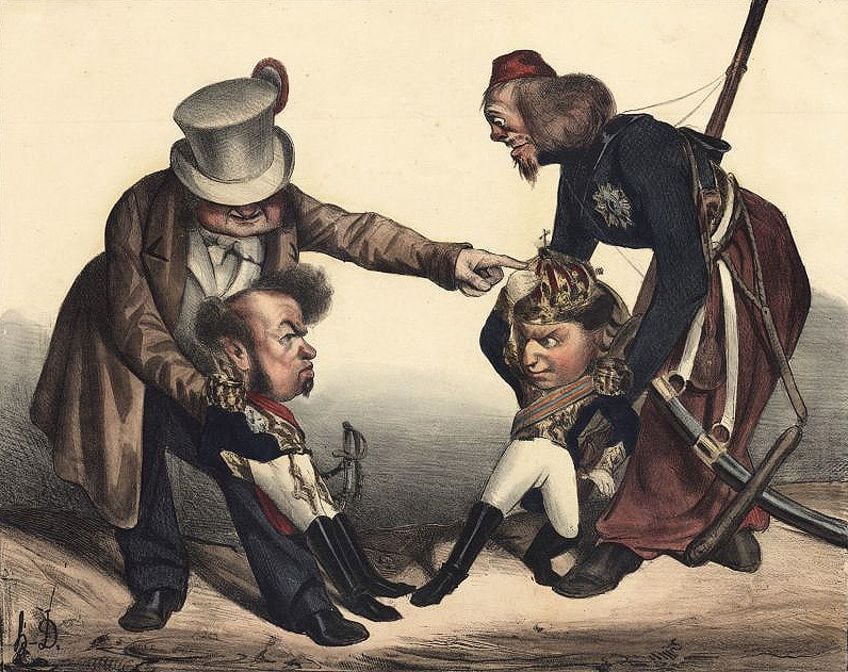
Notable Realism Artists and Their Artworks
During the height of the Realism Art movement, many artists began to create works that attempted to accurately portray life as it was experienced. A few of the movement’s most prominent artists have been listed, along with some of their most well-known works that exist as Realism artifacts today.
Honoré Daumier (1808 – 1879)
Existing as one of the initial pioneers of the Realism Art movement, Honoré Daumier was a French artist who was associated with the Realist tradition throughout his career. Daumier was formerly a caricaturist as well as a painter, printmaker, and sculptor who used his art to brazenly comment on the political situation that existed within the newly modernized France.
Differing vastly from the works of other Realism artists, Daumier’s political cartoons often demonstrated subjective and overstated nuances that were present within the majority of his works. His satirical caricatures of society and politics at the time were drawn to criticize the immorality that he saw to be present within France, with his artworks presenting his honest and eye-opening view.
Due to the fact that he was a passionate Democrat, Daumier firmly believed that the working-class were the true heroes of life, who sadly existed alongside wicked lawyers and politicians within Paris. Daumier’s caricatures, which openly mocked government officials and the behaviors of the bourgeoisie, saw him imprisoned for six months due to him depicting King Louis Philippe I and his authorities in a negative light.
Amongst his Realist works, Daumier is possibly best known for his painting series entitled The Third-Class Carriage, painted between 1862 and 1864. His works highlighted the socio-economic differences that existed in contemporary France. His work depicted the experience of being aboard the third-class carriage, which was only used by working-class Parisians who could not afford a second or first-class ticket. These railway carriages were made up of open compartments that were cramped and filthy, with nothing but hard wooden benches to sit on.
Immersed in light, a nursing mother, an elderly woman, and a sleeping boy are pictured exuding such peace and harmony that was not usually related to using public transport. Thus, Daumier depicted the working-class in a way that let them rise above their status as third-class citizens. He gave an astonishingly honest glimpse into life in 19th century France, as his works depicted the poverty and quiet bravery of the working-class.
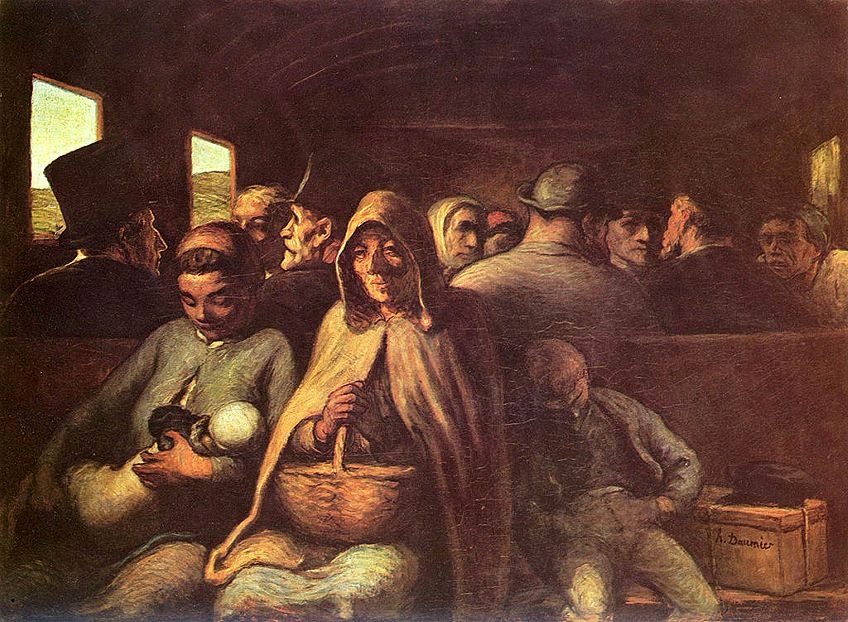
Jean-François Millet (1814 – 1875)
One of art history’s most prominent Realism artists was painter Jean-François Millet, who was known for his role in the founding of the Barbizon school, which was a group of artists who banded together to challenge the influences of Romanticism in art. Millet chose to feature ordinary, working-class people in modern social conditions within his paintings and frequently returned to depict farmers, who were his subjects of choice.
Millet created paintings that typically depicted everyday subjects such as laborers working in the fields, as well as the rustic atmosphere of the countryside. His most iconic Realism work, titled The Gleaners and painted in 1857, depicted three working-class women bending over and working on the land. These women who were said to be peasants are busy gleaning a field of stalks of wheat after a harvest.
After researching the theme of gleaners for ten years, Millet’s depiction of these women was said to be representative of the rural working-class. Millet shows three women in the foreground, who are bent over with their eyes firmly on the ground. He juxtaposed this repetitive and unappreciated task through the positions of the three women, as they each embodied a phase in the gleaning process. The severity of their task contrasted against the abundant harvest in the background further emphasized their lower position in society.
The Gleaners is famous for featuring the lowest levels of rural society in a sympathetic and emblematic way, which went on to greatly anger the French upper class. Having just come out of the 1848 French Revolution, bourgeois society thought that this painting glorified the working-class, as it acted as a stark reminder that French society was built on the labors of the working masses.
The depiction of the workers made upper-class society feel uncomfortable about their status, as the working class outnumbered them. This disparity in numbers between the two classes meant that the working-class had the power and could potentially overturn the upper-class if another revolution were to break out. Thus, with the impact of the recent revolution still on their minds, this painting was not received well by upper-class society.

Gustave Courbet (1819 – 1877)
Seen as the leading figure of Realism, French artist Gustave Courbet set up the foundation for the movement in the 1840s when he began to depict peasants and laborers on a large scale. Prior to Courbet, painters first idealized scenes and removed all flaws and imperfections, meaning that they did not depict scenes exactly as they saw them. Courbet believed this approach to be disadvantageous to painting, as it essentially removed any element of individuality within artworks.
Courbet was firmly against the glorification and romanticization of art within his own works, as he encouraged other artists to make ordinary and contemporary scenes and subject matters the focus of their works. Courbet believed that the best way to create truly democratic art was through the honest portrayal of scenes from ordinary life and stated that in capturing an authentic slice of life, he was able to view society as its best, worst, and most average.
Throughout his career, Courbet’s most iconic work remained Burial at Ornans, painted in 1849. With this painting, Courbet cemented himself within the Realism movement that was developing at the time through his depiction of an ordinary rural funeral service in his birth town.
In doing so, Courbet created a painting of an everyday topic with unknown people on a grand scale that was typically reserved for history painting.
What makes this work so iconic is that Courbet avoided all spiritual value beyond the actual service, as no depiction of Christ and the heavens are shown. Additionally, through depicting seemingly ordinary and unnamed individuals within his painting, Courbet demonstrated to Parisian Salon-goers that Burial at Ornans actually implied the burial of the Romanticism movement.
Another of his notable artworks was The Stone Breakers, painted in 1849. Within this painting, he depicted two workers in the process of breaking stones to create gravel for roads. Through portraying a job that was significantly underpaid and physically exhausting, as well as subverting man’s supposedly harmonious relationship with nature, Courbet created a real snapshot of everyday life. Additionally, by keeping the identity of the two workers anonymous, this painting stood as a symbol for the poverty experienced by the working-class.
Courbet’s The Stone Breakers contained artistic elements that would go on to define Realism. More emphasis is placed on the worker’s filthy and threadbare clothing, their powerful hands, and the relationship they have to the land they are working on. In doing so, Courbet focuses attention on the quiet dignity of the lower-class, which further highlights their unappreciated labor upon which modern France was built.
Both of Courbet’s works raised ordinary subjects to a level symbolic of the human, everyday struggle, in addition to giving a realist depiction of French society at the time. He managed to clearly display the honesty and respect related to human struggles within the working-class, with his stark depictions not being well-received within the art world

Rosa Bonheur (1822 – 1899)
An important female figure within the Realism Art movement was Rosa Bonheur, who was also considered to be the most significant female painter of both the Realism movement and the 19th century. Whilst her artworks tended to depict farm animals, fields, and other countryside environments, Bonheur was praised for the intense Realism that was present within her works.
Bonheur was best known for her animal paintings, which she was able to create after thoroughly studying the anatomy of animals. One of her most well-known works is Ploughing in the Nivernais, painted in 1849. This painting depicts two teams of oxen pulling plows to break and aerate the soil, with the oxen existing as the true heroes of the work. Little attention is paid to the men, as the purpose of this work was to contrast the brilliance and nobility of agricultural labor to the dishonesty and immorality of the city.
This Realist work was subject to united critical acclaim due to Bonheur redirecting attention away from human beings towards the oxen. At the 1849 French Salon, Ploughing in the Nivernais won first prize and has since been celebrated as an essential painting of the Realist movement.
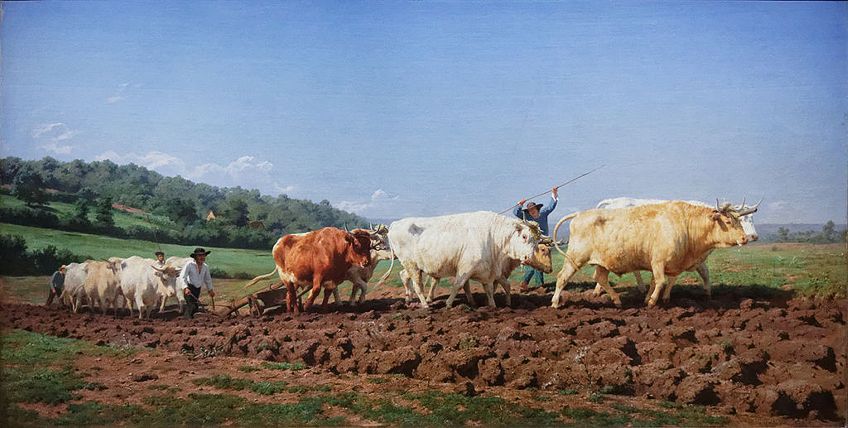
Edward Hopper (1882 – 1967)
One of the more modern forms of Realism to develop was American Realism, which came about in the early 20th century. Edward Hopper was one of the most influential artists of this movement. Hopper’s artworks tended to focus on the isolation and solitude of modern life. Existing as the most famous American Realist painter, Hopper was said to have created a more honest portrait of 20th century America than any other artist at that time.
Within Hopper’s works, he typically depicts individuals as solitary and detached from their environments, as his paintings explored the essence of modern city life. He often referred to the psychological states of the individuals within his paintings and forced viewers to complete the portrayal of his works themselves through their own understanding. This was very influential within the art world, as it encouraged other movements to leave the understanding of their artworks up to the viewer to decide.
His most notable and recognizable American Realism painting remains Nighthawks, painted in 1942. Inspired by a restaurant on Greenwich Avenue, Hopper depicts a gloomy scene of four individuals in a downtown Manhattan dinner at a presumably late hour. His work was inspired by the somber aftermath of World War Two, as themes of isolation, moral corruption, and dismal sorrow are emphasized within the work.
When looking at Nighthawks, Hopper intended to accurately capture the essence of life during that time, with his work depicting the hard life and problems faced by American’s during the country’s dark period of war. As the American Realism movement expanded, this artwork by Hopper was constantly celebrated for the way it captured an honest experience of America and remains well recognized today.

Realism in Other Art Forms
As the Realism Art movement developed, it inspired the cultivation of a sense of Realism in various other artistic movements. These included Realism that was present within literature, theatre, and cinema.
Literature
When looking at Realism as a literary movement, the writing that was created was often based on objective reality. Authors would place attention on showing the everyday activities and lives of those within the middle and lower-class as accurately as possible. After the Industrial Revolution, the literature that came about marked a stark move away from the Romanticism movement. Writings began to incorporate elements of Realism and did not make use of any dramatization or idealization when capturing reality.
The notable development of literary realism did not occur until the 1850s and was heavily inspired by the aesthetic works of artist Gustave Courbet. The critical manifesto, Le Réalisme, was written in 1857 by a popular French author who was known as Champfleury, which went on to define Realism within writing. Champfleury, who popularized the painting style used by Courbet, stated that the hero of any novel should be an ordinary man as opposed to an extraordinary one.

Other significant Realist writers were the brothers Jules and Edmond Goncourt, who wrote Germinie Lacerteux in 1864. Within their writings, they explored various social and occupational contexts and set out to portray the social relations that existed amongst both the upper and lower classes.
Realism that entered literature emphasized the themes of separation, objectivity, and observation within writings. In addition, literature was also used to give a clear but restrained criticism and moral judgment of the social environment that existed. Famous artists to come from this Realist period of writing include Charles Dickens and Leo Tolstoy.
After the Realism movement within literature, Naturalism developed, which attempted to create an even more faithful representation of reality.
Theater
Realism within the theater first emerged in European drama during the 19th century in response to the impact of the Industrial Revolution and the advance in science. The purpose of Realism in the theater was to bring focus to the psychological and social problems that occurred in everyday life, with theatrical texts and performances beginning to achieve greater authenticity when imitating real life.
Dramas that incorporated Realism abandoned the use of poetic language and fancy diction in favor of creating dialogue that looked and sounded like ordinary speech and behavior. The acting employed in past plays was typically exaggerated and pretentious, and had no place in Realism theatre. This style was replaced with very organic speech, gestures, and movements, with stage settings also being reproduced to match the natural surroundings that were portrayed.
Important Realist dramatists included August Strindberg and Henrik Ibsen from Scandinavia, as well as Maxim Gorky and Anton Chekhov from Russia. Anton Chekov made use of camera angles to reproduce a monotonous and analytic slice of life so as to expose the rhetorical and persuasive nature of realistic drama. These playwrights, along with many others, dismissed the complicated and artificial plot surrounding the well-made play, instead choosing to explore concepts and conflicts that occurred in real-life, modern society.
Dramatists were not afraid to display their characters as ordinary, powerless human beings who were unable to find the answers to their problems. After World War Two, the Realistic approach that had consumed theater broke down and gave way for the development of nihilism and the absurd, in response to the atrocities that were seen in the war.
Cinema
Similar to the development of literature and theater, cinema relied greatly on the 19th century Realism movement for structure and thematic material. However, the essence of film has managed to lend itself to a type of Realism that can be found midway between life and fiction.
Within Italy, Neorealism developed after World War Two, with films beginning to focus on portraying current social issues. Films that fell into this bracket of Neorealism tried to create documentary-like impartiality by making use of ordinary people in leading roles and including sections of real documentary recordings into the story.

Two types of film Realism existed, namely Seamless Realism and Aesthetic Realism. Within Seamless Realism, filmmakers used various film techniques and narrative structures to create the illusion of reality, which helped to maintain the movie’s genuineness. Aesthetic Realism acknowledged that multiple Realisms existed and used a combination of amateur actors, natural lighting, and locations. This was done so viewers could form their own opinions based on the film as opposed to being manipulated into the favored interpretation.
The films that best embody this genre are Open City (1945) and Paisan (1946) by Roberto Rossellini, and Bicycle Thieves (1948) by Vittorio de Sica. In the 1960s, Italian Neorealism filmmakers took existing Realist film approaches and remolded them to produce more politically oriented films. This inspired a new wave of filmmaking, most notably shown by the kitchen sink dramas that emerged from the United Kingdom in the 1650s and 1960s.
The Legacy of Realism Art
Despite beginning in France, the development and success of the Realism Art movement quickly spread to the rest of Europe. Realism became a highly influential movement within the art world, as its ideology completely changed the landscape of art creation. While the movement had equivalents within other European countries that copied its style and philosophy, no other Realism created the same kind of dispute as the original movement had done in France.
Realism was borne out of an innate social rebellion of the painting traditions that had become institutionalized and accepted as correct in society, as support for history and genre paintings were given by state-funded art academies only. In other European countries, this national endorsement of painting styles was less common, meaning that Realism did not seem as extreme a movement.
The influence of French Realism found its way into various other countries throughout its peak, such as Socialist Realism in Soviet Russia between 1925 and 1935. In the early 20th century, the Ashcan School group of Realist painters was developed in America, which laid the foundations for American Realism and Social Realism, which existed between the 1920s and 1930s.
Despite never existing as a completely coherent group, Realism is considered to be the first modern movement within art. However, after having gone through the movement’s history, it is still easy to ponder this question: What is Realism in art? Essentially, artworks that incorporate Realism have abandoned the traditionally assumed and idealized portrayals of subject matters and scenes in favor of an authentic and genuine depiction of ordinary living, so as to capture a true slice of life.

Further Reading
Realism is a fascinating artistic movement to learn about, as it led to the creation of so many other movements that were not even related to fine art. The Realism movement influenced so many other doctrines within the creative world that it can truly be considered as the first contemporary art movement to exist. If you have enjoyed reading about the Realism movement as well as its artists, we have suggested a book that will further consolidate your knowledge.
Realism (Style and Civilization)
Written by one of the most eminent contemporary art historians, Linda Nochlin provides an outstanding overview of the Realism movement, as well as the historical and contextual circumstances surrounding its development. Nochlin makes use of examples from French, American, German, and Italian Realists to demonstrate the popularity of this movement, which adds to the clear distinction she creates between reality and Realism This book exists as a good base to start and offers an excellent introduction to this 19th century art movement.
- Traces the development of realism within 19th-century art
- Nochlin does a great job of explaining what was unique about realism
- A discussion of realism within the context of several themes
Take a look at our Realism art webstory here!
Summary of the Realism Art Movement
What Is Realism in Art?
Realism in art described artworks that abandoned the traditional idealization and stylization typically associated with the Romanticism movement in favor of creating a genuine depiction of everyday life through the honest subject matter and scenes that were chosen.
What Is a Suitable Realism Art Definition?
The Realism Art movement can be defined as one that discarded the formal and traditional elements that had previously dictated the creation of art, in an attempt to portray life as it was truly seen. This was done by authentically depicting subject matter without disguising the more distasteful aspects of life.
What Is the Favored Subject Matter Within Realism Art?
The subject matter frequently chosen within Realism Art was that of laborers typically belonging to the middle and lower class. These individuals were often depicted in their working environment, which emphasized the immense struggle they experienced in life.
Which Artists Created Iconic Works That Are Seen as Realism Artifacts Today?
The most famous Realist artists, who have created some of the most well-known works to date, include Honoré Daumier, Jean-François Millet, Gustave Courbet, Rosa Bonheur, and Edward Hopper.
Isabella studied at the University of Cape Town in South Africa and graduated with a Bachelor of Arts majoring in English Literature & Language and Psychology. Throughout her undergraduate years, she took Art History as an additional subject and absolutely loved it. Building on from her art history knowledge that began in high school, art has always been a particular area of fascination for her. From learning about artworks previously unknown to her, or sharpening her existing understanding of specific works, the ability to continue learning within this interesting sphere excites her greatly.
Her focal points of interest in art history encompass profiling specific artists and art movements, as it is these areas where she is able to really dig deep into the rich narrative of the art world. Additionally, she particularly enjoys exploring the different artistic styles of the 20th century, as well as the important impact that female artists have had on the development of art history.
Learn more about Isabella Meyer and the Art in Context Team.
Cite this Article
Isabella, Meyer, “Realism Art – A History of Realism and the Realism Art Movement.” Art in Context. March 30, 2021. URL: https://artincontext.org/realism-art/
Meyer, I. (2021, 30 March). Realism Art – A History of Realism and the Realism Art Movement. Art in Context. https://artincontext.org/realism-art/
Meyer, Isabella. “Realism Art – A History of Realism and the Realism Art Movement.” Art in Context, March 30, 2021. https://artincontext.org/realism-art/.





